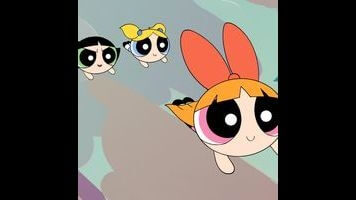The Powerpuff Girls reboot falls back on generic tropes

All the kids’ networks are doing reboots, from Nick’s Hey Arnold to Disney XD’s Ducktales. Still, some of the new elements of the Cartoon Network’s reboot of The Powerpuff Girls, Craig McCracken’s seminal hit show (it premiered in 1998 and ran for seven years) remain a mystery. It follows the bizarre 2014 one-off Dance Pantsed, a highly stylized Powerpuff Girls special in which unique animation could not mask rushed pacing and wonky storytelling. It feels like CN took that criticism to heart to an extreme degree for this reboot, bringing in Spongebob Squarepants’ Nick Jennings and Bob Boyle to streamline the look, and replacing the original three voice actors (Catherine Cavadini, Tara Strong, and E.G. Daily as Blossom, Bubbles, and Buttercup, respectively) with three new ones (Amanda Leighton, Kristen Li, and Natalie Palamides). The latter point caused a bit of Twitter consternation, with Tara Strong expressing some resentment and Craig McCracken himself throwing his support toward the three original actors. The incident was eventually smoothed over when both gave their tacit support for the show later on, but the recasts are still puzzling, especially since Tom Kenny and Jennifer Hale are returning for their original roles.
The original series aired at a time when “Girl Power” messages filled the entertainment airwaves. The new Powerpuff Girls feels like a response to Disney’s Star Vs. The Forces Of Evil: an attempt to cater to nostalgia, and an outreach to ride the wave of today’s call for more content for women and girls. Which is certainly fine—as fine as any news of a reboot can be—but is it worth it? Well, of the two episodes sent for screening, it’s really hard to say. The episodes are mostly okay, but they’re not bringing anything new to the table: They traffic in references to the old show within a very straightforward context, while somewhat redefining characters (Blossom, specifically), with some random bouts of direct Spongebob-esque humor.
In the stronger episode, “Princess Buttercup,” Buttercup joins a group of roller-derby punk girls, while classic villain Princess Morbucks tries to force her way in as her Powerpuff replacement. The two different plot threads come together in a smart, if predictable way, with some fairly good jokes (an overacting monster, clearly a Jennings/Spongebob-esque gag) and strong visuals that help the reboot marking its own direction. But the weaker “Escape From Monster Island” offers two storylines that don’t work well together at all. Bubbles has to decide which of her sisters to bring with her to a boy-band concert, all while on a mission to save the Mayor. The visuals here take a noticeable hit, with some poorly flowing storyboards and disconnected editing. But watching Blossom—who classically has been defined by her integrity and focus on the bigger, most important picture—get petty and competitive with Buttercup at the expense of the Mayor’s safety is the biggest pill to swallow.
But that’s the question: Is Blossom just out of character, or is this the reboot’s new approach to the leader of the girls? Comparing this version to the original, it’s a definite lesser effort. McCracken’s use of distinct, sharp visuals with pinpoint sound design (much of it silent) allowed for unexpected comedy beats (purposely inconsistent proportions, sudden reactions, long awkward pauses) as well as dramatic ones (the layout when characters are broken or beaten, the bursts of poignant feminist commentary)—none of that is here. Judged on its own merits, the reboot shows some promise, mainly in weird bursts of random gags. But if the plots are going to be the same as ones we’ve seen before (character falls into a wrong crowd after feeling rejected; characters fighting over one ticket to a particular event), then any novel characterization changes aren’t going to mean anything if they’re following down the old, clichéd paths.
In addition, the original girls were distinctly kindergarteners, with extremely simple concerns masking complex ones. Here, their traits are more tween-centric (cliques, boy-band obsessions, even the Mayor-direct toy phone is updated), which is way outside their age group. The “5-year-olds as superheroes” juxtaposition of the original Powerpuff premise is gone, which makes this show just about teenage girls with problems (“tweens as superheroes” has been done with My Life As A Teenage Robot and Kim Possible). Perhaps Jennings and Boyle will deliver on the depth and/or the comedy in future episodes, but The Powerpuff Girls, at this point, feel as thin as their new outlines.